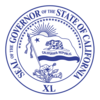Persifor Frazer Smith
Persifor Frazer Smith | |
|---|---|
 | |
| 5th Military Governor of California | |
| In office 1849–1849 | |
| Preceded by | Richard Barnes Mason |
| Succeeded by | Bennett C. Riley |
| Personal details | |
| Born | November 16, 1798 Philadelphia, Pennsylvania |
| Died | May 17, 1858 (aged 59) Leavenworth, Kansas |
| Spouse |
Frances Jeanette Bureau
(m. 1822; died 1852)Anne Monica Millard Armstrong
(m. 1854) |
| Children | Howard Smith (first marriage) |
| Profession | Soldier |
| Military service | |
| Allegiance | |
| Branch/service | |
| Years of service | 1836–1838 1846–1858 |
| Rank | |
| Commands | U.S. Regiment of Mounted Riflemen P.F. Smith's Brigade Pacific Division Department of the West |
| Battles/wars | 2nd Seminole War Mexican-American War Bleeding Kansas |
Persifor Frazer Smith (November 16, 1798 – May 17, 1858) was a U.S. Army officer during the Seminole Wars and Mexican-American War, as well as one of the last military governors of California before it became a US state.
Life
Smith was born in Philadelphia, Pennsylvania, the son of Jonathan and Mary Ann (Frazer) Smith. His maternal grandfather was Revolutionary War figure Persifor Frazer.[1] General Smith is sometimes confused with his cousin, also named Persifor Frazer Smith, who was a well-known lawyer in Philadelphia. Persifor Frazer Smith the lawyer was the son of Joseph Smith (brother of Jonathan Smith) and Mary Frazer (sister of Mary Ann Frazer). Other notable relatives include his cousin, Joseph Smith Harris.
Smith served as a colonel of volunteers in the Seminole Wars from 1836 to 1838, before taking part in the Mexican–American War. He commanded the 2nd Brigade in Worth's Division at the Battle of Monterrey. He was brevetted brigadier general in September 1846 and joined Winfield Scott's army as commander of the 1st Brigade, 2nd Division. He led his brigade at the battles of Veracruz, Cerro Gordo and Contreras. He was brevetted major general for actions at Contreras and fought in the battles for Mexico City. He served on the armistice commission and then as military governor of Mexico City.
After the war, he commanded the Pacific Division of the U.S. Army, predecessor of the Department of the Pacific. In 1849, in his capacity as commander, he sent relief parties across the Sierra Nevada in the fall to meet the last arrivals in the emigration, saving many lives.[2]
He next commanded the Department of Texas, where he selected the site for Fort Davis[3] and issued orders for the establishment of Fort Lancaster. Smith was commander of the Department of the West at Fort Leavenworth during the Bleeding Kansas conflict. Obeying Governor Wilson Shannon´s request, in September 1856 he sent 1,300 troops to protect the Lecompton territorial capital from a threatened attack by freesoilers. He died at Leavenworth, Kansas, while trying to quiet a disturbance, and is buried at Laurel Hill Cemetery in Philadelphia.[4]
General Smith married his first wife, Frances Jeanette Bureau, in 1822. Their only child, Howard Smith, was a physician and surgeon. Howard Smith served on the staff of General Kirby Smith during the Civil War. After his first wife's death in 1852, General Persifor Frazer Smith married Anne Monica Millard Armstrong, widow of Francis Wells Armstrong.
Legacy
It has been speculated[by whom?] that, despite his Northern upbringing, Smith would have supported the Confederacy in the Civil War as a result of his long-time residence in the South, and would possibly have been one of its most experienced officers. However, he rendered the issue moot by dying three years before the war began. His stepson, Frank Crawford Armstrong, did serve as brigadier general in the Confederate army.[citation needed]
References
- ^ Armstrong County, Pa., Her People, Past and Present, J. H. Beers & Co., 1914; Pp. 489-496.
- ^ Josiah Royce, California, Berkeley: Heyday Books, 2002, p. 192 et seq.
- ^ Fort Davis
- ^ Persifor Frazer Smith at Find a Grave
- New International Encyclopedia, Vol XVIII, New York, Dodd, Mead and Company, 1912

